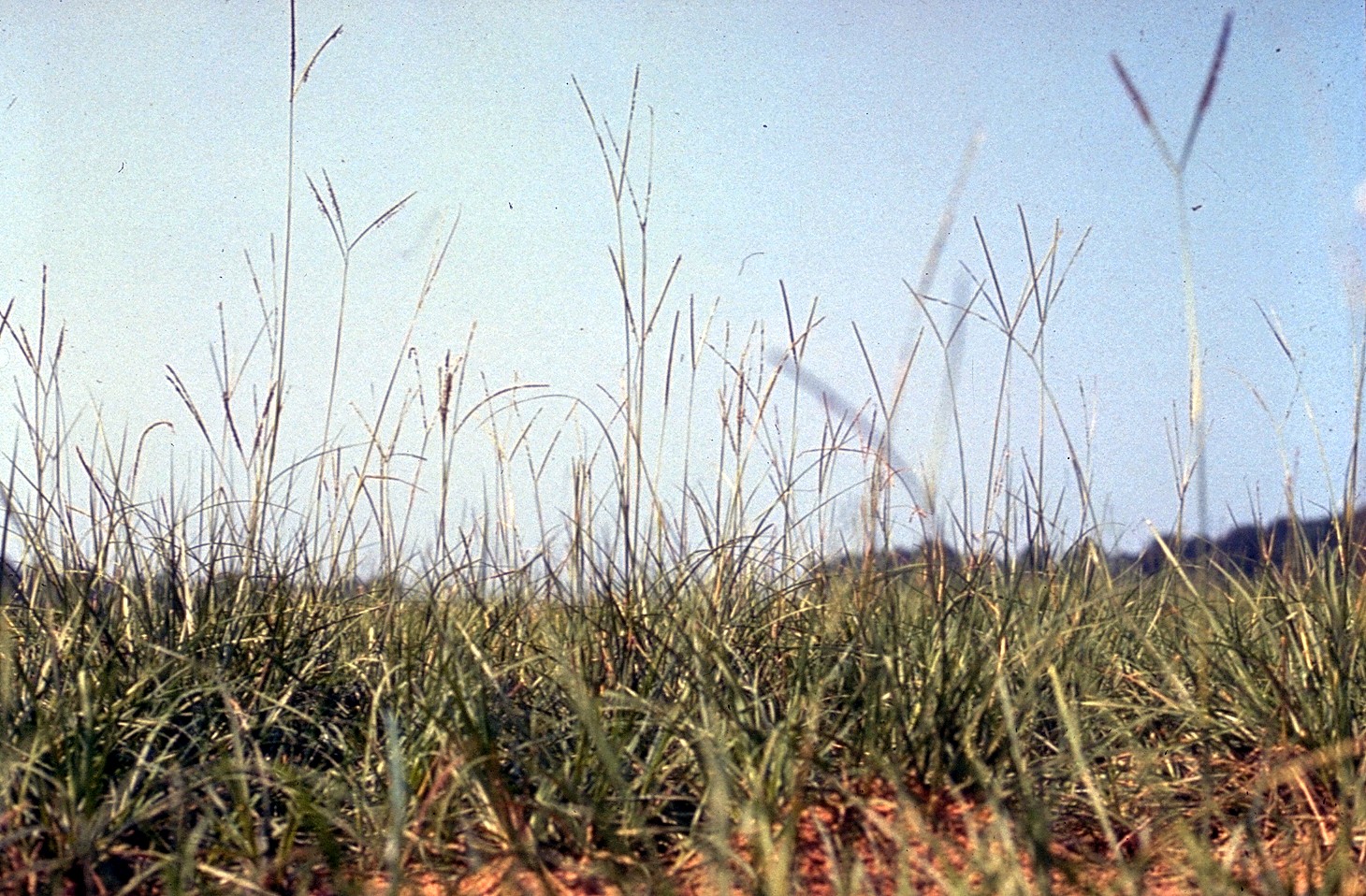- Bahia grass
Taxobox
name = Bahia grass

image_width = 240px
regnum =Plant ae
divisio = Magnoliophyta
classis =Liliopsida
ordo =Poales
familia =Poaceae
tribus =Paniceae
genus = "Paspalum "
species = "P. notatum"
binomial = "Paspalum notatum"
binomial_authority = FlueggéBahia grass ("Paspalum notatum"), also known as Common bahia and Pensacola bahia, is a tropical to subtropical perennial
grass (family Poaceae). It is notable for its prominent dual, V-shapedinflorescence consisting of two spike-likeraceme s containing multiple tiny spikelets, each about 2.8-3.5 mm long.This grass is low-growing and creeping with
stolon s and stout, scalyrhizome s. Stolons are pressed firmly to the ground, have short internodes, and root freely from the nodes forming a densesod . The flat, tough-textured leaves are usually hairless, with blades 2-6 mm wide. They are flat, folded, and inrolled, tapering to a fine point. The leaf bases at the terminus of each rhizome usually have a purplish hue. Stems usually reach 20-75 cm tall.The terminal dual racemes are each attached to the top of a slender stem or with one slightly below the other. Infrequently, there may be a third present below the terminal ones. The spikelets closely overlap in two rows. They are broad, rounded, smooth and shiny. Inside each spikelet is a tiny
flower . The tiny, black, featherlike stigmas and blackstamen s can be seen dangling at the tips of these flowers.Bahia grass is native to
Mexico andSouth America , but has been naturalized inNorth America and other places. It prefers sandy soils and is tolerant of shade. It is also fairly hardy, tolerating salty conditions and drought extremely well. Plants seed from June to November.This grass is used primarily as a forage. The nutritive value remains high when mature, but it is not very productive. It is also valued as an
erosion -controlling soil stabilizer, as well as for its productivity, ease of establishment and persistence. It makes a relatively low-maintenance turfgrass as well, with less disease and insect problems than some of the other warm season grasses.References
* [http://allallergy.net/fapaidfind.cfm?cdeoc=102 Basic description and allergy information regarding Bahia grass]
* [http://www.angrin.tlri.gov.tw/english/grine/farm-facee/notatum.html Photos of Bahia grass]
* Gould, Frank W. "Common Texas Grasses: An Illustrated Guide". Texas A&M University Press, College Station, Texas (1978)
*List of plants of Caatinga vegetation of Brazil
Wikimedia Foundation. 2010.
